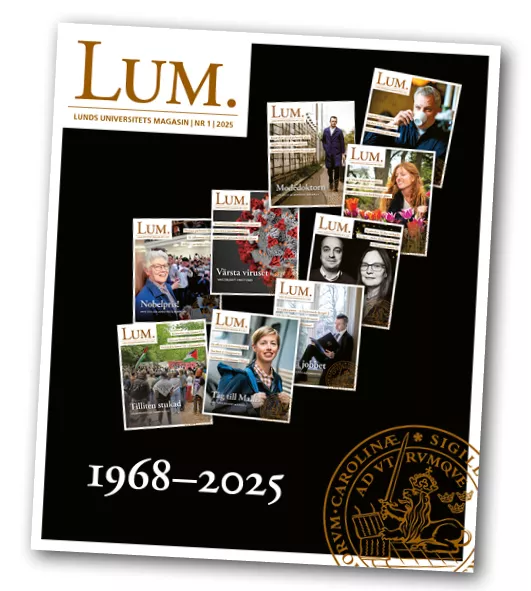It is clear that a lot has happened in the area of gender equality at Lund University since women were first allowed to study here 150 years ago. In the 2022 gender equality statistics, you can see that female students are in the majority today, while in other categories, such as faculty boards and management, the gender division is relatively even.
“I think there is enthusiasm for these issues that has become more pronounced in recent years. Employees want to see these sorts of questions on the agenda, and we have responsive management,” says Rebecca Selberg.
Career progression differs
Yet career progression in academia still differs sharply between men and women. Looking at the number of professors at Lund University, still less than a third – 31 per cent – are women. At The Faculty of Engineering (LTH) and the Faculty of Science, the numbers are down at 25 and 27 per cent respectively. In 2021, the Swedish Research Council predicted that it will take 25 years to reach gender equality in terms of the numbers of male and female professors. In technology and science, it is expected to take even longer.
Rebecca Selberg, who a few years ago co-authored a report on the gender balance within academia, says that there is a lag built into the system when it comes to the professorship issue.
“Since these positions are often some way down a career path, change will reach that category last. Then I think it’s also the case that a system has been created that partially makes it easier for men to build a career. Women fall behind since they give birth and often take more responsibility for home life, which makes it more difficult to conduct research abroad as well as other activities that are seen to be competitive advantages.”
Transparent career paths needed
Other things also contribute to women’s uphill struggle on the academic career path. Both male and female researchers have a tendency to cite male researchers in their work. Men often apply for larger funding awards and they do so earlier in their careers. Part of the solution for a more equal university in terms of gender distribution is therefore to invest in transparent career paths and good career support for all researchers and teaching staff, as well as evaluating employees’ performance in partly new ways, Rebecca Selberg argues.
“A better holistic perspective on career development is needed. If you have given birth immediately after defending your thesis, you might not be able to travel abroad for an international postdoc position. So you have to take that into account, and look at what the individual has done instead. It is important that academic appointments boards, deans and others gain greater understanding of bias.”
Management has changed
When it comes to management at departmental level, Rebecca Selberg has recently conducted a survey based on her own experiences. Since being selected to become head of department at the Department of Gender Studies about a year ago, she has noticed that increasing numbers of women are reaching equivalent positions in other departments.
“Within the Faculty of Social Sciences, which I am a part of, I see that increasing numbers of heads of department are women around forty.”
While it used to be the case that mostly experienced professors were given head of department positions in order to take on the academic leadership of the departments, Rebecca Selberg says that a lot of people, like her, are relatively new associate professors. The average age is therefore lower, and Rebecca Selberg feels that today’s heads of department have a more administrative managerial role compared to the past. The question is, why is that?
"Academic housekeeping"
“Is it the case that we are seeing more women heads of department and deans at a time when the roles are becoming more and more administratively burdened? I would say that the real power in universities today is actually held by those who have large and successful research teams, and those people are still men, to a large extent. Women take care of the academic housekeeping, while the men do research, you might say.”
Gender equal leadership does not mean that women are necessarily better suited – “they can be dreadful bosses, just like men can” – and it is important to understand that our talents are not dependent on our sex, says Rebecca Selberg. But when women enter politics, for example, it also results in a broader view of what subjects are important. The same applies to research.
“Women medics often highlight female illnesses that have not previously been studied enough. Economic research is improved if unpaid work in the home is also taken into account. Historic research becomes more comprehensive if you consider the role of women. And so on. We get better, we learn more and we gain deeper understanding when women and minorities are afforded their place.”




